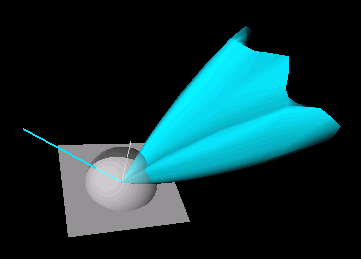BRDF, BTDF, BSDF, Anisotropic Measurement Models
|
Model |
Parameters |
Remarks |
Use |
|---|---|---|---|
|
Advanced Scattering Surface |
Theta incident |
Reflection and/or transmission |
For surfaces that fits well the Gaussian / Lambertian model |
|
Wavelength |
Not anisotropic (no dependency with Phi incident) |
||
|
Specular, Gaussian and Lambertian for reflection & transmission |
Fitted data |
||
|
Anisotropic Scattering Surface |
Theta, Phi incident |
Reflection and/or transmission |
For surfaces that fits well the Gaussian / Lambertian model |
|
Specular, Gaussian and Lambertian for reflection & transmission |
Anisotropic (dependency with Phi incident) |
||
|
Reflection/Transmission spectrum |
Fitted data |
||
|
Vector for orientation |
Same colors for reflection and transmission |
||
|
Complete Scattering Surface |
Theta incident |
Reflection only |
General reflective surfaces Iridescent surfaces |
|
Theta, Phi reflection |
|||
|
Wavelength |
Not anisotropic (no dependency with Phi incident) |
||
|
Polarization | and // both for incidence and reflection |
|||
|
Simple BSDF |
Theta incident - Theta, Phi reflection/ transmission - 1 Reflection/Transmission spectrum |
Reflection and/or transmission - Not anisotropic (no dependency with Phi incident) - Same colors for reflection and transmission |
General isotropic reflective/transmissive surfaces (same colors for reflection and transmission) Not for iridescent surfaces |
|
Anisotropic BSDF |
Theta, Phi incident |
Reflection and/or transmission |
General isotropic / anisotropic reflective / transmissive surfaces. Not for iridescent surfaces. |
|
Theta, Phi reflection/transmission |
Anisotropic (dependency with Phi incident) |
||
|
1 Reflection spectrum |
Different colors for reflection and transmission |
||
|
1 Transmission spectrum |
Does work for isotropic surfaces as well |
||
|
Vector for orientation |



